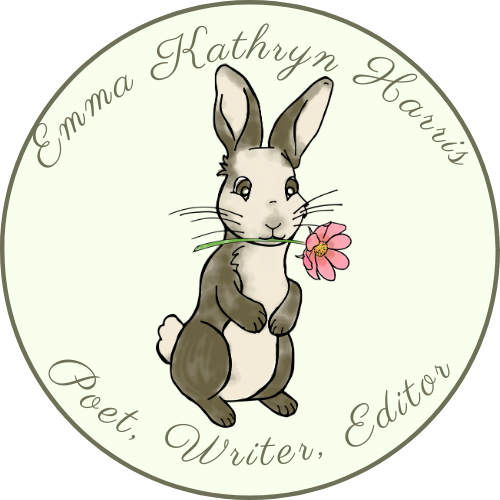A word after a word after a word is power.”
Margaret Atwood, Author
This article is the third in a four-part series on author newsletters. Read the first article on why your author newsletter is your best marketing tool for your brand here. And the second on how content, design and layout attract readers here. Today’s article focuses on the effect subject lines and your marketing can have on your subscribers.
Many newsletters, both authors and otherwise, appear in my inbox regularly. So regular that I am overwhelmed. In fact, I am unable to read them all.
I doubt I am alone. How many newsletters are you signed up to receive? How often do they arrive? Can you read them all?
Our intentions are there—to benefit from something someone promises to offer—but if we do not read the message, all it does is take up space. And when my inbox is overloaded, I don’t even try to read them. I simply hit “delete” as I go down the line. Eventually I unsubscribe from the ones I know I am not reading.
If that is how we feel about the newsletters we opted in for, how does our newsletter stack up with the rest of them? Are our subscribers actually reading our news? The chances of them setting it aside to read later is slim. So what would compel them to open it when they check their email?
Engage subscribers with newsletter titles
Related to content, your newsletter title or subject line and accompanying subtitle are what will entice your readers to open your newsletter.
As I mentioned above, I delete a lot of newsletters. I scroll the inbox page in my email looking for a reason to delete it (I have an email dedicated to newsletters, so there are no worries about other messages). Before I tap the delete button, I quickly scan the subject line. If the title is appealing, I will open it. Otherwise, “delete” it is.
Titles should be short, but powerful. As a writer, you understand how important titles can be in getting people interested in the contents. Here again you can study newsletters you subscribe to and note what entices you to either open or overlook it.
Action verbs are helpful to input in your title, and you can get a good list here.
What you do not want to do is have a subject line that reads: “My new book is out!” or “Buy my latest book,” or “My week in Cancun,” or anything else that is a sales pitch or all about you. Your subject line should also not be “Newsletter edition no. 20.” You need an actual title.
Granted, if your week in Cancun has everything to do with your latest novel and you are not bragging, then that might be appropriate. But the title still needs to reflect the connection to your “research” in Cancun and your novel.
Remember, this is about your audience. What subject line would encourage them to open your email?
Here are some of my enticing titles which garnered a 90-100 percent open rate:
- Publishing is part of the writing journey
- When writing and tea become healing partners
- Hurricane Helene’s effects on mental health
- How quiet is solitude?
- Men and women are individual enigmas
- For the love of reading
- Weeding is like editing
You want a title that shows your reader the article is meant for him/her, something he/she will relate to. Yes, it may be a micro essay about your experience, but you are showing your readers you understand their needs and interests simply by the title you choose.
Titles should be short, but powerful.
Your subtitle is a mini sentence description of what else they can expect in the article. It could begin with “why it is okay to…” “what we learn from…” “to be a good writer, we need to…”
Think about the titles of your articles or books that you are either pitching or have had published. The editor collaborated with you to make sure it would grab their readers’ attention. Or even book titles you saw that “spoke” to you and compelled you to pick it up.
The same must be done with your newsletter. It requires that much thought and effort for you to give it a compelling, attention-grabbing title and subject line that tells your readers: “You cannot miss this!”

Marketing your newsletter
Marketing our newsletter, getting it out in the public eye, is a natural course to get subscribers. I mean, if they do not know it exists, how else will they sign up? So we spend a lot of effort marketing it—putting the sign-up link on our Facebook and Instagram pages with a “sign-up for my newsletter” message attached to high hopes we get one or two subscribers. If you have not thought of it, you should “pin” an issue of your newsletter with a link to sign up at the top of your social media pages.
Your website should be the number one area to market your newsletter. The sign-up needs to be obvious and easy for your visitor to do. Gone are the days when we asked 20 questions when signing up so we knew what their favorite food was. Just get a first name and email address. That is it. Sign up should be on every page in the footer, but on the homepage for sure, either with a pop-up box, a box to the side bar, or the top. Since your newsletter is the connection to your readers, make this a priority, as I discussed in the first series article: “Why your author newsletter is your best marketing tool for your brand.”
We add the link in our email signature (right? I mean, you do have it in your signature, yes?).
And every time we are interviewed on a podcast, or we host a webinar, or anything else where we attract a new audience, we are mentioning our newsletter. To the “How can people find you?” question, you could say: “People can visit myauthorwebsite dot com and get a free writing tips workbook when they sign up for my monthly newsletter.” (Or whatever your lead magnet happens to be.)
There are many areas we can highlight our newsletter. It should be at the top of our mind and expressed passionately so that others will realize they are missing out on something awesome.
And when you do mention it or post it somewhere, give more thought as to how you will express your own appreciation for your main marketing tool. Instead of: “Sign up for my newsletter,” how about a brief description: “My newsletter subscribers receive sample chapters in my upcoming books”; “Each month, subscribers are given tangible writing exercises to help them with their work in progress”; “Subscribers benefit from sample queries with my comments to help them in their agent search.” And so on.

Newsletter marketing—Reuse, recycle
In addition to your normal “sign-up for my newsletter” marketing, there are other subtle ways to market it.
For example, I write these articles for my blog, but I give a teaser in my newsletter if my readers want to read it. Granted I already have them as subscribers, but as a loyal reader, they might share the article with someone they know, who, in turn, will sign up for my newsletter.
From the same article, I choose a few snippets to share on social media with a link back to my website. If they are a new visitor, they will see the pop-up box to sign up for my newsletter.
You might also use your material to share on YouTube or TikTok. Some authors read select chapters from their books. When viewers see this and are interested, they will follow you. If you have added your website or even a link to directly sign up for your newsletter, they will check it out. These videos can also be added to your newsletter for your subscribers.
This is yet another way you are not overextending yourself, feeling as though you have to write 1,000-word articles every month or week. Just reuse and reshape what you have in a way that is fun for you.
With this soft marketing, you not only entice new subscribers, but you keep your current readers engaged and excited about your next newsletter.
In the fourth and final article of his series, I touch on other dos and don’ts to consider in producing your author newsletter.
Question for you: I’m curious—what are some ways you keep your readers engaged? What other fun things do you do to market your newsletter?




